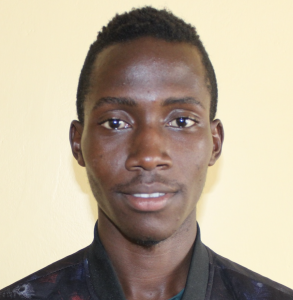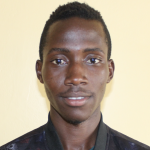Riding into Chavakali on a motorbike, one is met by lush, green surroundings. The area is covered with trees and plantations of maize, tea and bananas. Tea is the main cash crop in this area. Some buildings are permanent while others are made the traditional way out of mud. This area looks so peaceful with everyone minding their own business; there are those working on their farms tilling and cultivating while others are seen in small groups chatting in low tones at the market centers and bus stops. We continued to Koitabut Primary School thinking that this community seems like a great place to live.
But without clean drinking water, things really aren't as good as they seem.
The 514 students attending Koitabut Primary School have to go out into the community to find the water they need. The only water source available is an unprotected spring located about 500 meters away. The source is completely open to contamination as pupils and community members step in the water itself as they fill their containers.
Beyond the poor quality of water, this spring is a seasonal water source that dries up during severe dry seasons. This means that during the dry seasons, pupils have to carry water from home or walk miles more in search on water. Many a time they will fetch water from any available source irregardless of its quality.
There are a lot of absences because most of the pupils don't want to be sent out for water throughout the school day. Those who stay at school and drink that water suffer from typhoid. Parents spend a lot of money taking their children to the hospital.
"Actually, we have suffered a lot in terms of not having enough clean drinking water in our school. It is really affecting us, especially academically as we learners waste a lot of time going to fetch water," said 13-year-old Sarah.
"As we have seen you, we are hoping that our lives are going to change positively after receiving clean drinking water."
What we can do:
Training
Training on good hygiene habits will be held for two days. The facilitator will use PHAST (participatory hygiene and sanitation transformation), ABCD (asset-based community development), CTC (child to child), lectures, group discussions, and handouts to teach health topics and ways to promote good practices within the school. The CTC method will prepare students to lead other students into healthy habits, as well as kickstart a CTC club for the school.
Handwashing Stations
Though the school is aware that they need to wash hands at critical times, they still have no handwashing stations for the pupils.
We will deliver two handwashing stations to the school, and the club will fill them with water on a daily basis and make sure there is always a cleaning agent such as soap or ash.
VIP Latrines
The school has 12 latrines, six each for boys and girls. These facilities are not sufficient considering the population of the pupils. As a result of this, there are very long lines during class break - so long that many students cannot wait and have to find a private place outside. On the other hand, due to lack of water in the school compound, these latrines are not cleaned daily because water is prioritized for drinking and cooking.
Two triple-door latrines will be constructed with local materials that the school will help gather. Three doors will serve the girls while the other three serve the boys. And with a new source of water on school grounds, students and staff should have enough to keep these new latrines clean.
Rainwater Catchment Tank
A 50,000-liter rainwater catchment tank will help alleviate the water crisis at this school. The school will also help gather the needed materials such as sand, rocks, and water for mixing cement. Once finished, this tank can begin catching rainfall that will be used by the school’s students and staff.
We and the school strongly believe that with this assistance, standards will significantly improve. These higher standards will translate to better academic performance!

 Rainwater Catchment
Rainwater Catchment
 Rehabilitation Project
Rehabilitation Project





































